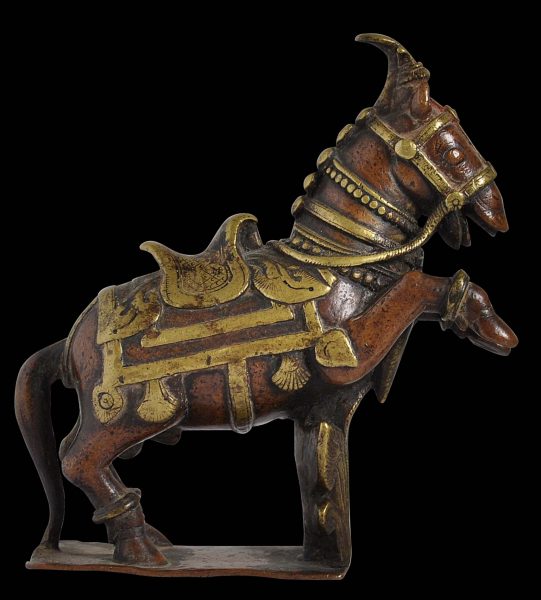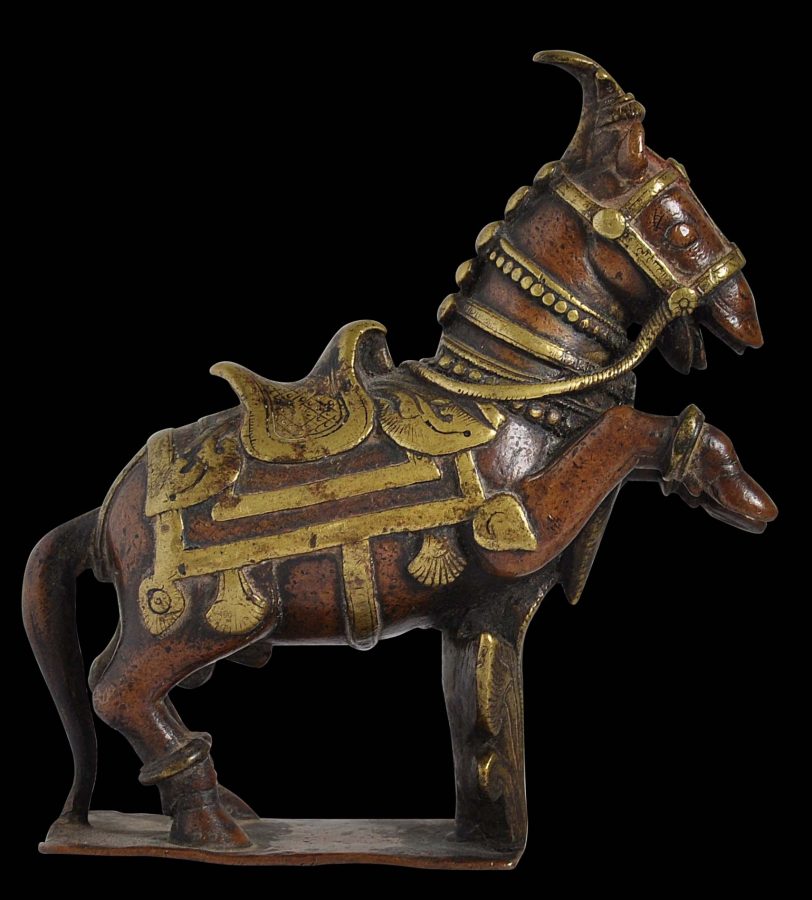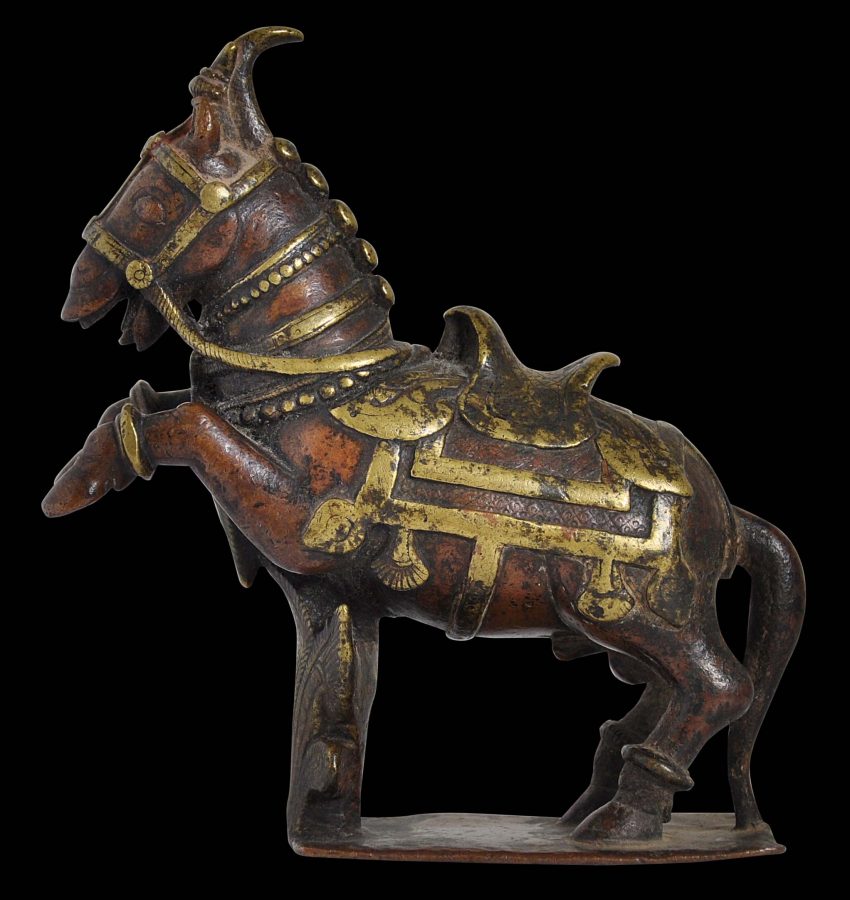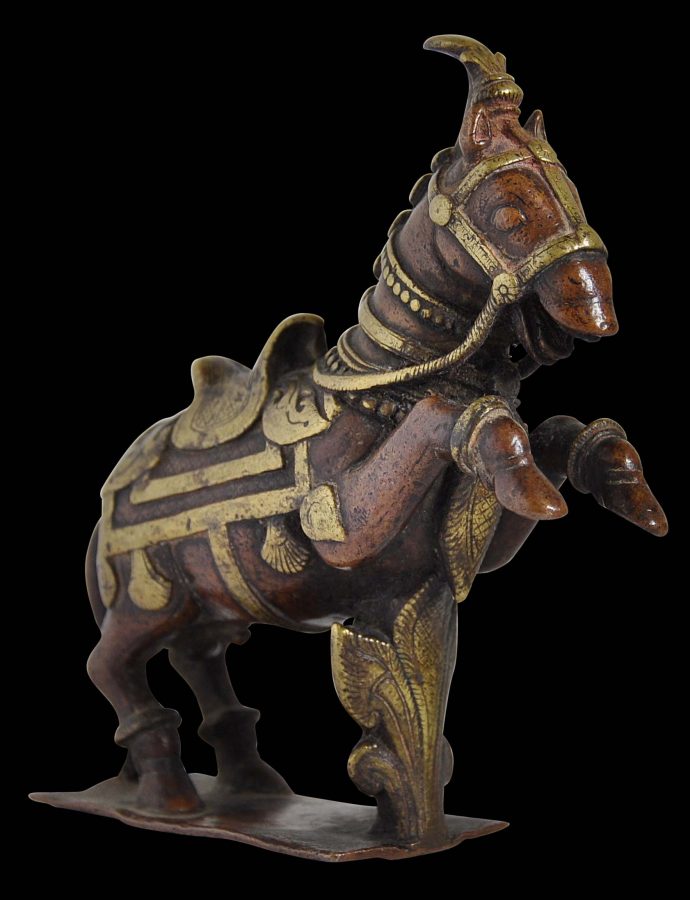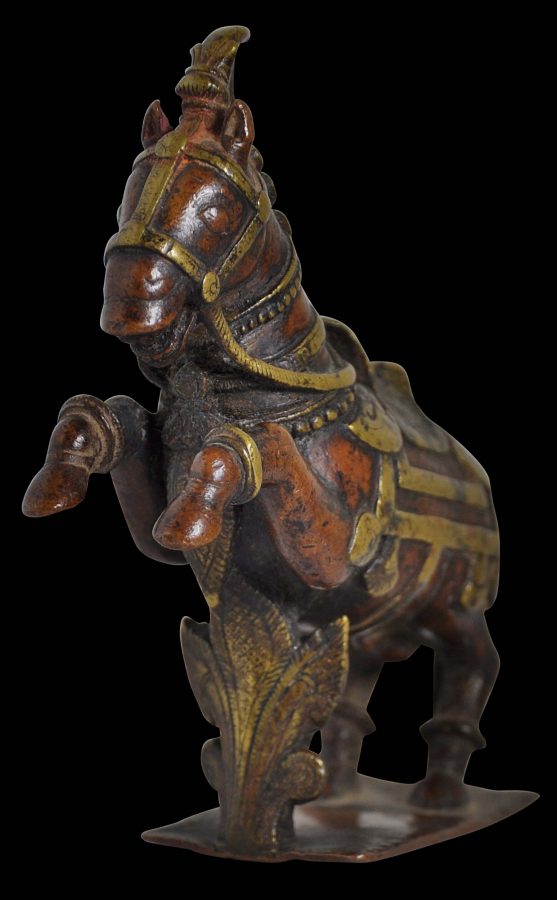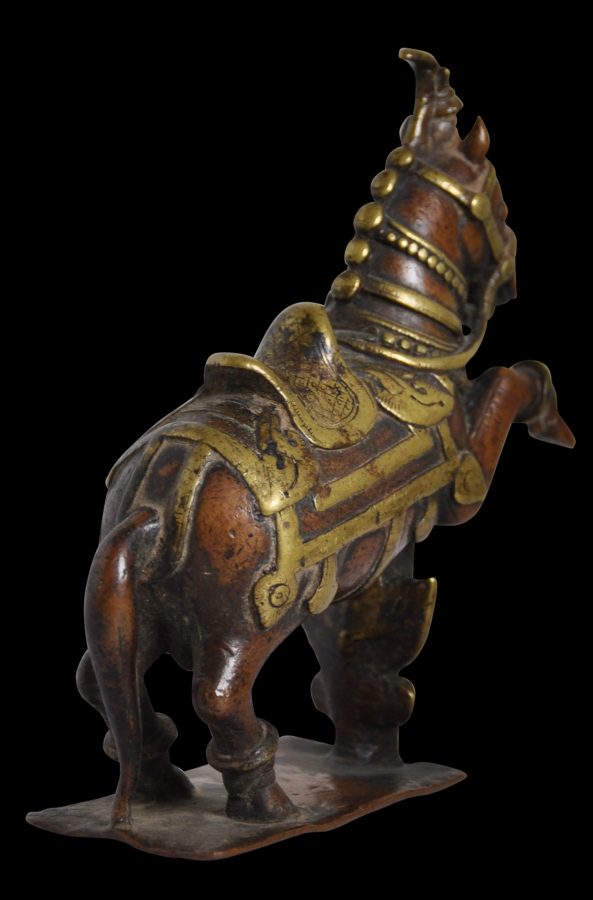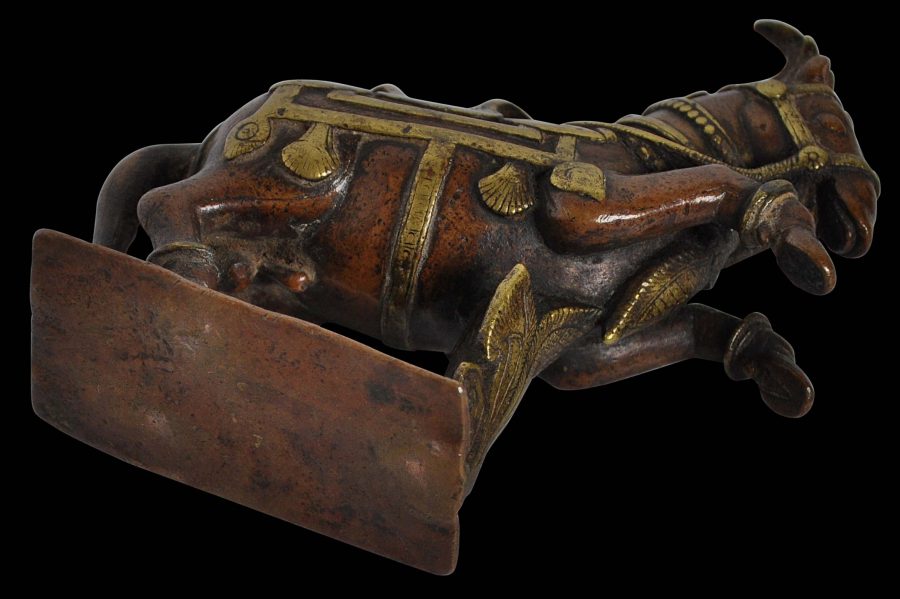This image, is almost certainly from Tanjore in Tamil Nadu, in India’s south. It shows the horse mount either of the god Khandoba, Aiyanar or Madurai Veeran, the hero of Madurai, the important south Indian temple town. Both are popular deities in Tamil Nadu and so draw on the same worshippers or followers.
The well-cast horse has copious jewellery and other decoration. It also has a prominent saddle and saddle cloth. It rears up on its hind legs and stands on a solid bronze platform. The chest of the horse is supported by a leafy flourish.
It has been decorated with what is known as the Ganga-Jumna technique whereby each object has been cast in bronze and finished with applied brass highlights. The term Ganga-Jumna relates to India’s two largest rivers which traditionally have had two different colours on account of differing types of soil sediment suspended in their waters. This type of work was done in the 18th and 19th centuries in and around Tanjore (now known as Thanjavur), in Tamil Nadu, in southern India.
Aiyanar (also spelt Ayyanar, Ayanar or Iyenar) is a village deity of Tamil Nadu. He is primarily worshipped as a protective guardian deity. Most Hindu priests with a strong attachment to Aiyanar are from the local potter community, but other caste members also officiate in his temples. The linkage with potters accounts for the large numbers of terracotta models of horses to be found in the grounds of Aiyanar temples in those parts of Tamil Nadu where Aiyanar worship is practiced (see the images below.) These models are there for the god to use at night when he emerges from the temple. It is why many of these models verge on being life-size.
Madurai Veeran (also known as Muthu Kumaran) is a Tamil folk deity popular in Tamil Nadu. He is the protector of the city of Madurai. His worship is also popular amongst the Tamil diaspora in Malaysia, Singapore and South Africa.
The horse bronze here is in fine condition. It is well cast, with a fine patina and with the contours softened by handling and devotional wear.
References
Pal, P., Art from the Indian Subcontinent: Asian Art at the Norton Simon Museum, Yale University Press, 2003.


